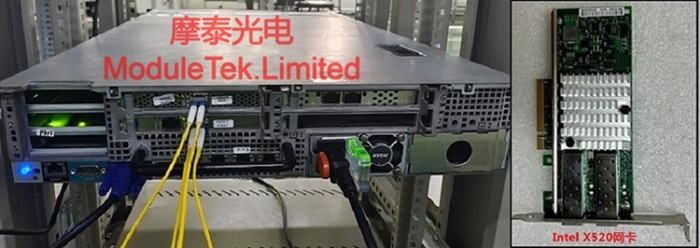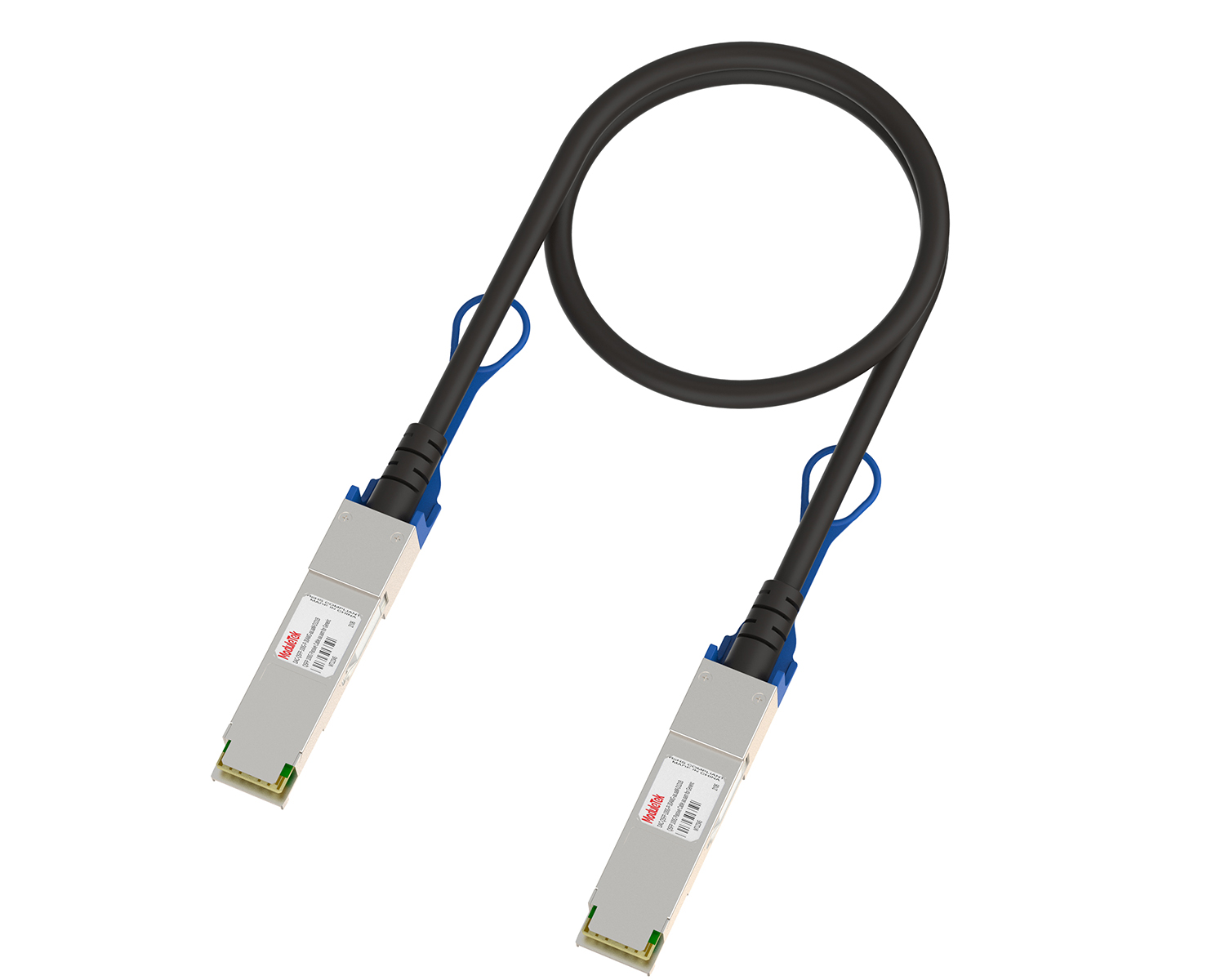How to read optical module information on a network card on Linux systems
Time: 2023-04-19
Optical modules can be used in addition to switches, routers and other independent devices, can also work in the network adapter, which is what we usually call the network card. We know that the optical module applied to the switch, according to the brand of the switch, the terminal using the appropriate commands to read the optical module information; then when the optical module used in the network card, and how to read the optical module information?
Next, let us use Moduletek SFP-10G-LR module to access the Intel X520 network card, to show you the operation of the Linux system to read the information on the network card access to the optical module.

Figure 1 Schematic diagram of the optical module connected to the server NIC
1. Optical module status
Execute the command "ethtool devname" to view the interface information;
The information output under this command contains interface rate, module rate, module link status (Link detected is yes as a prerequisite for the work of the optical module), and some interface setting information.
Note: devname is the name of the NIC/port, usually expressed as ethX or pXpX, with X as a number, which can be viewed through the ip or ifconfig commands; it can also be determined according to the slot number on the server panel, for example, p4p1 in the following figure indicates the first interface of the fourth slot.
2. NIC identification of the module and DDM detection data
Execute the command "ethtool -m devname" to view the information of the optical module on the interface of the device; some NICs do not support this command;
The information output under this command can be divided into two items, one is the identification information of the optical module, including the module type, wavelength, transmission distance, serial number, vendor name, etc., which originates from the coded data written by the optical module; the other is the DDM data of the optical module, including the diagnosis of real-time data as well as the threshold range, which allows the optical module on the two devices at both ends to be checked whether the working status is normal or not, by focusing on the received optical power, transmitted optical power, temperature value, current value, etc. The information output under this command can be divided into two items. module working status is normal.
The optical modules provided by Moduletek can be used in various brands of network cards, welcome to buy.
If you have any questions about the above content, you can contact us by Email : web@moduletek.com

 40G/100G Optical Transceivers
40G/100G Optical Transceivers 10G/25G Optical Transceivers
10G/25G Optical Transceivers 155M/622M/2.5G Optical Transceivers
155M/622M/2.5G Optical Transceivers 100M/1G Optical Transceivers
100M/1G Optical Transceivers FC 16G/32G Optical Transceivers
FC 16G/32G Optical Transceivers CWDM/DWDM Optical Transceivers
CWDM/DWDM Optical Transceivers 100M/1G/10G Coppers
100M/1G/10G Coppers Active Cable AOC
Active Cable AOC Direct Attach Cable DAC
Direct Attach Cable DAC Regular/MTP-MPO Fiber Patch Cords
Regular/MTP-MPO Fiber Patch Cords MT2011
MT2011 MT2010
MT2010 CodingBox
CodingBox






